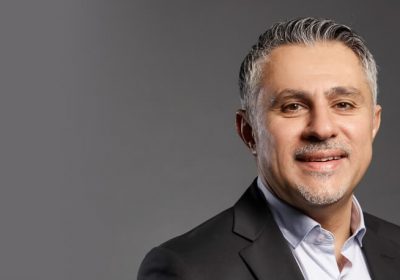
- Author: Martin Bean & Graham Winter
- Posted: March 5, 2024
Why a Framework is Essential for a High Performing Finance Team
The starting point for building a top finance team is a shared understanding of the essential characteristics, or building blocks, for a high-performing team.
You need that so everyone is clear and aligned about what a top-performing team really is. The challenge is to make it compellingly practical, while not oversimplifying the complexities of team direction, dynamics and development.
Without a framework, teamwork can be a mystery, or a jumble of important, but disconnected ideas like trust, purpose and collaboration.
Three Core Elements
Observe any team operating effectively at pace in a high-demand environment and at the heart of their ability to deliver consistent high performance will be a loop of three core activities: Alignment, Collaboration and Learning.
You can use these three elements, called ACL, to shape your team framework and identify the building blocks for any team. When unpacked, the team framework offers a blueprint to guide the conversations about team plans, processes and practices.
Align
To be aligned is to commit to shared direction and focus.
- What is our purpose and vision for success?
- What are our goals and priorities?
- What values and behaviours are important to guide our actions?
Without a shared understanding and commitment to these elements, team members lack unity, engagement and the will to collaborate and learn.
Collaborate
To collaborate is to share in a spirit of working as one.
- How strong is our trust and commitment to each other?
- Are we leveraging resources by co-creating and tackling problems together?
- Is our decision making and execution coordinated?
Without sharing there is inevitably waste, missed opportunities, disengagement, and the risks that come from silos and poorly executed strategies.
Learn
To learn is to be open, agile and adaptable (for a purpose).
- Are we open to learn from feedback, being challenged and reflection?
- Are we empowered, accountable and adding value?
- What’s our optimal operating rhythm?
Without adaptability built into your operating rhythm, the team will be too slow to respond in the face of rapid and unpredictable change.
Operating Rhythm
Operating rhythm is the pace and tempo of the rituals, routines and actions by which teams align, collaborate and learn. There is no right or wrong way, just the underlying principle of ‘loop and learn’ to navigate through changing context, in much the same way as a sailboat skipper and crew continually align, collaborate and learn.
Sometimes the operating rhythm is dictated by the context in which the team is operating. A basketball team has a game-day rhythm; an executive team reports in governance cycles. At other times the team defines its own tempo, such as weekly agile sprints or a 90-day performance cycle.
Team Canvas
The basic Team Canvas illustrates the three core elements, align, collaborate and learn, then describes two essential building blocks for team effectiveness in each: Direction and Focus, Connection and Synergy, Awareness and Tempo.
This process covers five phases:
Phase 1. Evaluate
The aim of this phase is to identify and quantify team strengths and gaps so you can define development priorities for your team and affirm ways of working.
Apart from providing a clear sense of strengths and gaps, the Team Canvas evaluation is also an excellent team development activity because it encourages everyone to contribute equally and agree a shared path forward.
Phase 2. Envision
The aim of this phase is to describe the optimal team setup and ways of working. This can be beneficial particularly for new teams or consistency across multiple teams.
The process is straightforward and requires asking the team to debate and define what success will mean for each building block on the canvas. Once complete, it gives a clear framework for choosing tools, prioritising development activities and guiding overall team development.
For example, a defence enterprise has used the canvas for this purpose over several years to shape the development of team capabilities across the whole enterprise.
Phase 3. Assemble
This is the phase where you prioritise development needs and tools based on the insights gained from the earlier phases.
Those tools might be drawn from this book, your own playbooks or other sources. It is up to you to choose those that are most suited to your context and needs.
For example, to align your team you might choose to use a Team Diamond which is described in the next chapter. This is a great way to efficiently build commitment to the team purpose and high-level priorities.
Phase 4. Implement
Implementing your chosen tools and practices is about creating new habits that are integrated into the operating rhythm so they become an ongoing feature of your team’s ways of working.
Why integrate them into the operating rhythm? Because they won’t stick without discipline. As renowned surgeon Atul Gawande advises about people and their habits, ‘We are not built for discipline. We are built for novelty and excitement, not for careful attention to detail. Discipline is something we have to work at.’
Gawande’s disciplined use of simple checklists built into operating rhythm transformed the rates of cross-infection in surgery across the world, and his methods have been widely adopted to help professionals to work in disciplined and effective ways.
Phase 5. Adapt
An effective operating rhythm will ensure that you regularly monitor, evaluate and adapt your tools and practices based on what is happening to your team and enterprise.
In the continually changing environment, you will inevitably be refining tools and adding new ways of working to adapt to changing conditions.
Building regular reviews of team performance into your operating rhythm and sharing your Team Canvas whenever a new member joins will ensure that everyone is literally on the same page.
Is your team clear and aligned about what a top-performing team really is? If not, get them together and run the Team Canvas evaluation. Chances are they’ll be immediately engaged in how to build the essential elements of a top team: trust, purpose, interpersonal dynamics and collaboration.
Authors –
Martin Bean, CBE – An experienced and highly skilled Chief Executive who has led two international universities through transformation, and a major global Division of Microsoft.
Graham Winter– A Psychologist who has led three Australian Olympic campaigns as Chief Psychologist, authored the best seller Think One Team, and coached dozens of Executive Teams.
Edited extract from Toolkit For Turbulence: the mindset and methods that leaders need to turn adversity to advantage (Wiley $34.95).
Now available at leading retailers and https://toolkitforturbulence.com/








